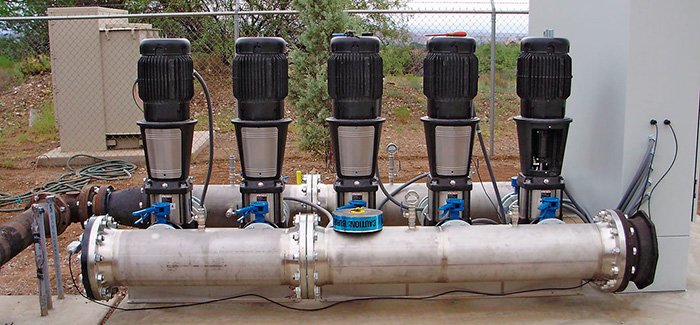Integrated pumping solution efficiently matches municipal water pressure with community demand in Cottonwood.
05/26/2016
For the city of Cottonwood, Arizona, a rapidly growing population put significant strain on the community's aging and disjointed water delivery system. Serving a customer base of 30,000 people in the state's second-fastest growing county, the water system struggled to provide a consistent supply of water to its residential service area, which nearly doubled between 1990 and 2010.
 Image 1. The integrated pressure boosting system is ideal for water supply systems, as well as municipal boosting, fire flow, water transfer and industrial applications. (Courtesy of Grundfos)
Image 1. The integrated pressure boosting system is ideal for water supply systems, as well as municipal boosting, fire flow, water transfer and industrial applications. (Courtesy of Grundfos)
